100 years of Boeing's immense legacy
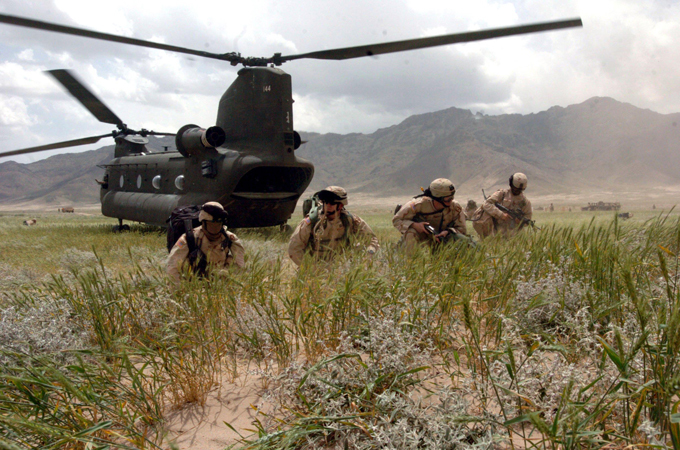
In March 1910, William E. Boeing bought Heath's shipyard in Seattle on the Duwamish River, which later became his first airplane factory. Boeing was incorporated in Seattle by William Boeing, on July 15, 1916, as "Pacific Aero Products Co". Boeing was later incorporated in Delaware, the original Certificate of Incorporation was filed with the Secretary of State of Delaware on July 19, 1934
In March 1910, William E. Boeing bought Heath's shipyard in Seattle on the Duwamish River, which later became his first airplane factory. Boeing was incorporated in Seattle by William Boeing, on July 15, 1916, as "Pacific Aero Products Co". Boeing was later incorporated in Delaware, the original Certificate of Incorporation was filed with the Secretary of State of Delaware on July 19, 1934
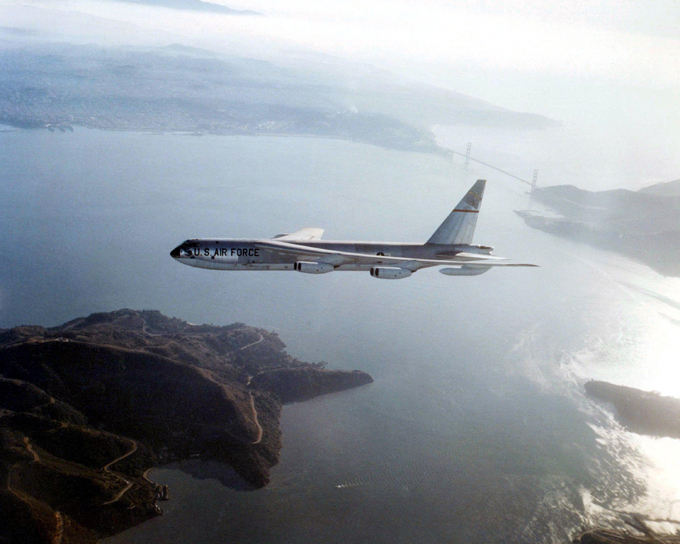
designs, manufactures, and sells airplanes, rotorcraft, rockets, and satellites worldwide. The company also provides leasing and product support services. Boeing is among the largest global aircraft manufacturers, is the second-largest defense contractor in the world based on 2013 revenue, and is the largest exporter in the United States by dollar value
designs, manufactures, and sells airplanes, rotorcraft, rockets, and satellites worldwide. The company also provides leasing and product support services. Boeing is among the largest global aircraft manufacturers, is the second-largest defense contractor in the world based on 2013 revenue, and is the largest exporter in the United States by dollar value
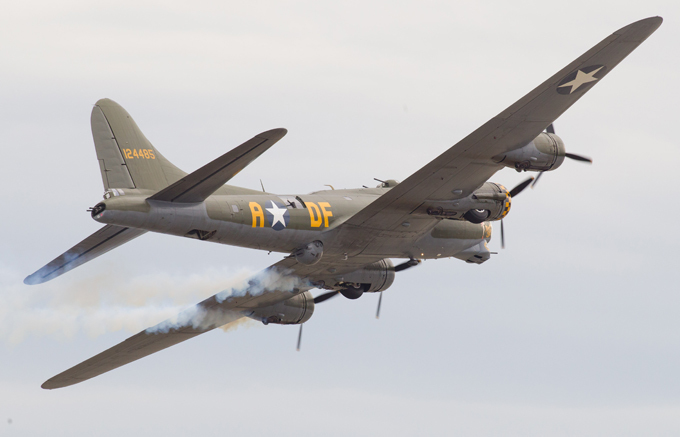
The Boeing B-17 Flying Fortress is a four-engine heavy bomber developed in the 1930s for the United States Army Air Corps (USAAC). Competing against Douglas and Martin for a contract to build 200 bombers, the Boeing entry outperformed both competitors and exceeded the air corps' performance specifications
The Boeing B-17 Flying Fortress is a four-engine heavy bomber developed in the 1930s for the United States Army Air Corps (USAAC). Competing against Douglas and Martin for a contract to build 200 bombers, the Boeing entry outperformed both competitors and exceeded the air corps' performance specifications

The Boeing B-29 Superfortress is a four-engine propeller-driven heavy bomber designed by Boeing which was flown primarily by the United States during World War II and the Korean War. It was one of the largest aircraft operational during World War II and featured state of the art technology. It was the single most expensive weapons project undertaken by the United States in World War II, exceeding the cost of the Manhattan Project by between 1 and 1.7 billion dollars
The Boeing B-29 Superfortress is a four-engine propeller-driven heavy bomber designed by Boeing which was flown primarily by the United States during World War II and the Korean War. It was one of the largest aircraft operational during World War II and featured state of the art technology. It was the single most expensive weapons project undertaken by the United States in World War II, exceeding the cost of the Manhattan Project by between 1 and 1.7 billion dollars

The Boeing E-3 Sentry, commonly known as AWACS, is an airborne early warning and control (AEW&C) aircraft developed by Boeing as the prime contractor. Derived from the Boeing 707, it provides all-weather surveillance, command, control, and communications, and is used by the United States Air Force, NATO, Royal Air Force, French Air Force, and Royal Saudi Air Force
The Boeing E-3 Sentry, commonly known as AWACS, is an airborne early warning and control (AEW&C) aircraft developed by Boeing as the prime contractor. Derived from the Boeing 707, it provides all-weather surveillance, command, control, and communications, and is used by the United States Air Force, NATO, Royal Air Force, French Air Force, and Royal Saudi Air Force

The Boeing 747 is often referred to by its original nickname, Jumbo Jet, or Queen of the Skies. Its distinctive "hump" upper deck along the forward part of the aircraft makes it among the world's most recognizable aircraft, and it was the first wide-body produced. Manufactured by Boeing's Commercial Airplane unitin the United States, the original version of the 747 had two and a half times greater capacity than the Boeing 707, one of the common large commercial aircraft of the 1960s. First flown commercially in 1970, the 747 held the passenger capacity record for 37 years
The Boeing 747 is often referred to by its original nickname, Jumbo Jet, or Queen of the Skies. Its distinctive "hump" upper deck along the forward part of the aircraft makes it among the world's most recognizable aircraft, and it was the first wide-body produced. Manufactured by Boeing's Commercial Airplane unitin the United States, the original version of the 747 had two and a half times greater capacity than the Boeing 707, one of the common large commercial aircraft of the 1960s. First flown commercially in 1970, the 747 held the passenger capacity record for 37 years
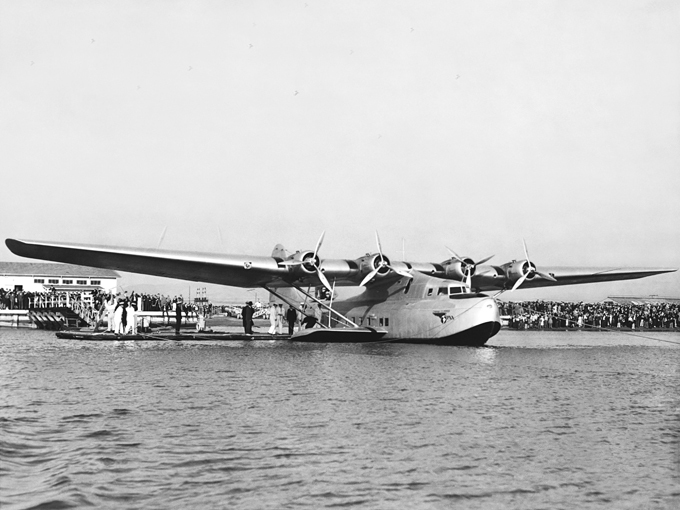
The Boeing Model 1, also known as the B & W Seaplane, was a United States single-engine biplane seaplane aircraft. It was the first Boeing product and carried the initials of its designers,William Boeing and Lt. Conrad Westervelt USN
The Boeing Model 1, also known as the B & W Seaplane, was a United States single-engine biplane seaplane aircraft. It was the first Boeing product and carried the initials of its designers,William Boeing and Lt. Conrad Westervelt USN
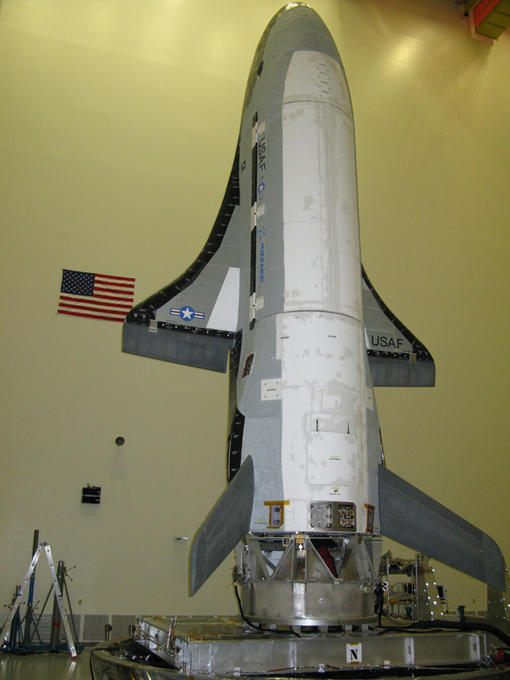
The Boeing X-37, also known as the Orbital Test Vehicle (OTV), is a reusable unmanned spacecraft. It is boosted into space by a launch vehicle, then re-enters Earth's atmosphere and lands as a spaceplane. The X-37 is operated by the United States Air Force for orbital spaceflight missions intended to demonstrate reusable space technologies. It is a 120%-scaled derivative of the earlier Boeing X-40
The Boeing X-37, also known as the Orbital Test Vehicle (OTV), is a reusable unmanned spacecraft. It is boosted into space by a launch vehicle, then re-enters Earth's atmosphere and lands as a spaceplane. The X-37 is operated by the United States Air Force for orbital spaceflight missions intended to demonstrate reusable space technologies. It is a 120%-scaled derivative of the earlier Boeing X-40
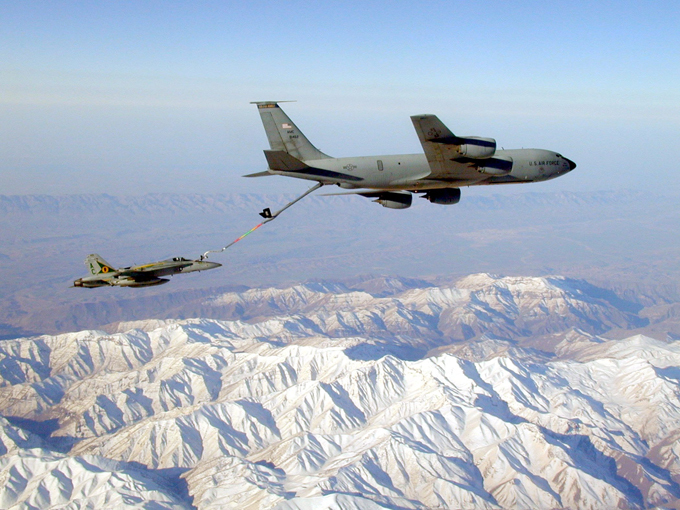
The Boeing KC-135 Stratotanker is a military aerial refueling aircraft. It and the Boeing 707 airliner developed from the Boeing 367-80 prototype. It is the predominant variant of the C-135 Stratolifter family of transport aircraft. The KC-135 was the US Air Force's first jet-powered refueling tanker and replaced the KC-97 Stratofreighter. The KC-135 was initially tasked with refueling strategic bombers, but was used extensively in the Vietnam War and later conflicts such as Operation Desert Storm to extend the range and endurance of US tactical fighters and bombers
The Boeing KC-135 Stratotanker is a military aerial refueling aircraft. It and the Boeing 707 airliner developed from the Boeing 367-80 prototype. It is the predominant variant of the C-135 Stratolifter family of transport aircraft. The KC-135 was the US Air Force's first jet-powered refueling tanker and replaced the KC-97 Stratofreighter. The KC-135 was initially tasked with refueling strategic bombers, but was used extensively in the Vietnam War and later conflicts such as Operation Desert Storm to extend the range and endurance of US tactical fighters and bombers
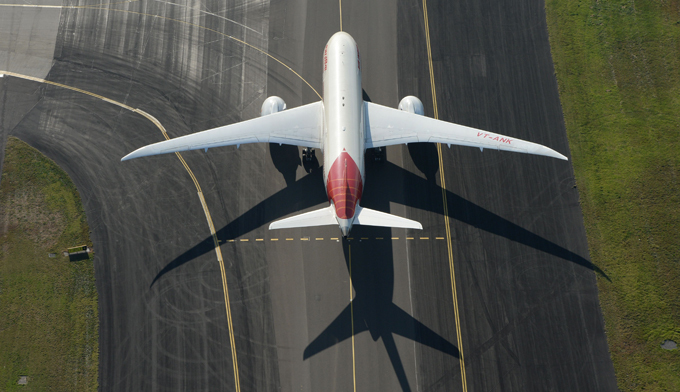
The Boeing 787 Dreamliner is an American long-range, mid-size widebody, twin-engine jet airliner by Boeing Commercial Airplanes. Its variants seat 242 to 335 passengers in typical three-class seating configurations. It is Boeing's most fuel-efficient airliner and is a pioneering airliner with the use of composite materials as the primary material in the construction of its airframe.
The Boeing 787 Dreamliner is an American long-range, mid-size widebody, twin-engine jet airliner by Boeing Commercial Airplanes. Its variants seat 242 to 335 passengers in typical three-class seating configurations. It is Boeing's most fuel-efficient airliner and is a pioneering airliner with the use of composite materials as the primary material in the construction of its airframe.

The Boeing 737 is a short- to medium-range twinjet narrow-body airliner. Originally developed as a shorter, lower-cost twin-engine airliner derived from Boeing's 707 and 727, the 737 has developed into a family of ten passenger models with capacities from 85 to 215 passengers. The 737 is Boeing's only narrow-body airliner in production, with the 737 Next Generation (-700, -800, and -900ER) variants currently being built. Production has also begun on the re-engined and redesigned 737 MAX, which is set to enter service in 2017
The Boeing 737 is a short- to medium-range twinjet narrow-body airliner. Originally developed as a shorter, lower-cost twin-engine airliner derived from Boeing's 707 and 727, the 737 has developed into a family of ten passenger models with capacities from 85 to 215 passengers. The 737 is Boeing's only narrow-body airliner in production, with the 737 Next Generation (-700, -800, and -900ER) variants currently being built. Production has also begun on the re-engined and redesigned 737 MAX, which is set to enter service in 2017
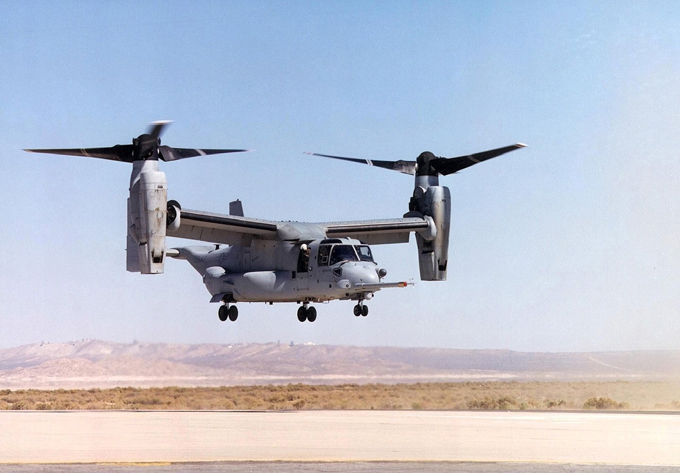
The Bell Boeing V-22 Osprey is an American multi-mission, tiltrotor military aircraft with both vertical takeoff and landing (VTOL), and short takeoff and landing (STOL) capabilities. It is designed to combine the functionality of a conventional helicopter with the long-range, high-speed cruise performance of a turboprop aircraft
The Bell Boeing V-22 Osprey is an American multi-mission, tiltrotor military aircraft with both vertical takeoff and landing (VTOL), and short takeoff and landing (STOL) capabilities. It is designed to combine the functionality of a conventional helicopter with the long-range, high-speed cruise performance of a turboprop aircraft



